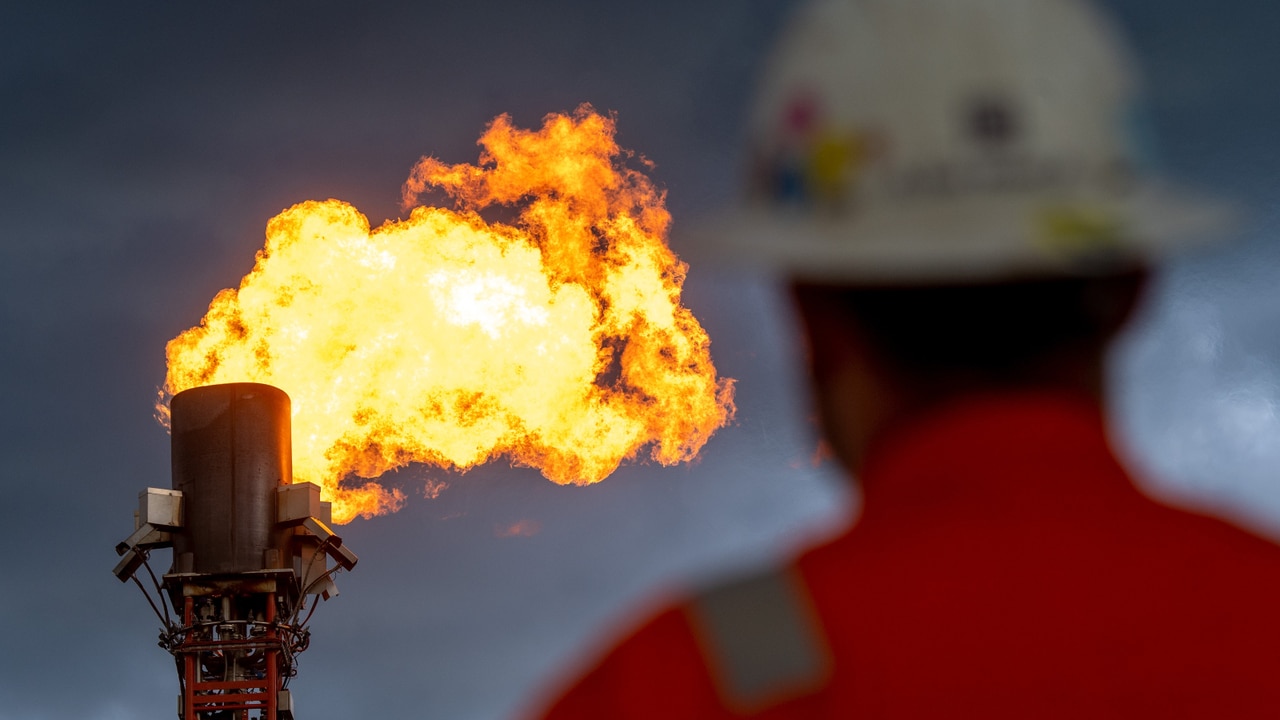Domestic gas users should be prioritised as east coast shortfalls loom: BlueScope
Australia’s east coast faces a looming shortfall of gas – stoking debate about who, exporters or domestic users, should miss out.

Business
Don't miss out on the headlines from Business. Followed categories will be added to My News.
BlueScope has called for the introduction of an east coast gas reservation to ensure domestic users are adequately supplied ahead of a looming regional supply crunch.
Australia’s east coast is awash with gas, but it is committed to export markets, and the country should prioritise domestic heavy users as it will achieve sizeable emission reductions.
The Australian Energy Market Operator earlier this year warned gas developments could be forced to run on diesel as soon as 2026 before a structural deficit from 2028 causes widespread economic harm.
Indicating the emerging tension between domestic users and exporters about increasingly tight supplies, Anna Matysek, head of climate change at BlueScope, said Australia is prioritising export markets and without changes to bolster supplies the company’s decarbonisation plans are at threat.
“We need about 30PJ to 40PJ of gas to make our transition of Port Kembla steelwork viable. That is quite a lot of gas in the context of the east coast market which is in decline, but we see a lot of benefit in going that way. By going that way, that is 3.6m tonnes of abatement every year, which is absolutely enormous,” Ms Matysek told an energy conference in Sydney.
“It is hard to see where we would get those sorts of volumes of gas from if there are potentially no new developments, I don’t know if that will happen, but if there are no new developments then we should be looking at a domestic reservation. 30PJ to 40PJ of gas is quite a lot of gas, granted. But it’s less than 1 per cent of what Australia currently exports.”
To implement a domestic gas reservation, mirroring one already in place in WA, would however require export contracts being broken.
Breaking export contracts from Queensland would be extremely contentious. Exporters such as Mark Hatfield, managing of Chevron Australia, said even talk of breaking export contracts is already causing concern among some of Canberra’s closest regional allies.
“If Japanese or Korean buyers think the contracts they signed to ensure their energy security are at risk, that would cause concern,” Mr Hatfield told the energy conference.
Chevron would unlikely be impacted as its operations are WA-based.
Other major users have warned doing so would dent Australia’s reputation and jeopardise Asian Pacific security amid a scramble for alternative supplies.
Still, pressure is likely to grow as Australia struggles to develop new sources of supply. Energy industry figures are increasingly alarmed about the prospect of shortfalls next year.
Gas is a vital fuel source for Australian manufacturers, and increasing prices will put the viability of many under pressure.
Gas increases will also weigh on households, even if they are fully electric.
Gas plays a vital role in electricity generation, used as a so-called peaker during periods when there are insufficient supplies of renewable energy and coal or heightened and unusual demand.
While gas can often only play a limited role, abundant supplies would help lower wholesale prices.
But its limited and unpredictable role has made it extremely difficult for Australian energy companies to commit sizeable amounts of capital to build new gas power stations.
As a result, just EnergyAustralia’s Tallawarra B, developed with NSW government support, remains one of the last such generators being built in recent years.
Proponents of gas have seized on the Australian Energy Regulator’s quarterly wholesale price costs as an indication of why Australia must develop new power plants.
The report showed wholesale electricity prices rose in winter from the previous year across the east coast led by Tasmania which saw an increase of 240 per cent. The rise will not immediately be felt by Australian households, but it adds upward pressure on bills when annual tariffs are reset on July 1, 2025.
Australian households have endured significant increases in energy prices, leaving a record number unable to pay their bills.
Mark Collette, managing director of EnergyAustralia, on Monday warned Australians are reaching the threshold of what many can afford to pay.
“We are nearing the limit of affordability,” Mr Collette told an energy conference in Sydney.
In a bid to bolster supplies, the Coalition has said it will include gas in a revised Capacity Investment Scheme that pays gas power plants to be ready should there be insufficient supplies of renewables.
The federal Labor government has rejected the calls, insisting gas cannot compete with renewables on price.
Australia’s energy industry has thrown wholehearted support behind including gas in the scheme, including Origin Energy’s chief executive Frank Calabria.
“For some time, I have stated that I believe gas should have been in the Capacity Investment Scheme for the very simple reason that when we look at the energy system, you are going to need something that can run for days,” said Mr Calabria.
“I think you will need gas for those times when you don’t have wind and solar.”
More Coverage
Originally published as Domestic gas users should be prioritised as east coast shortfalls loom: BlueScope









